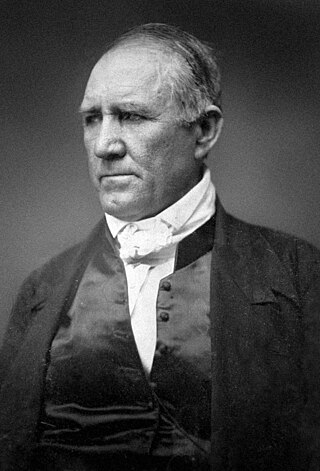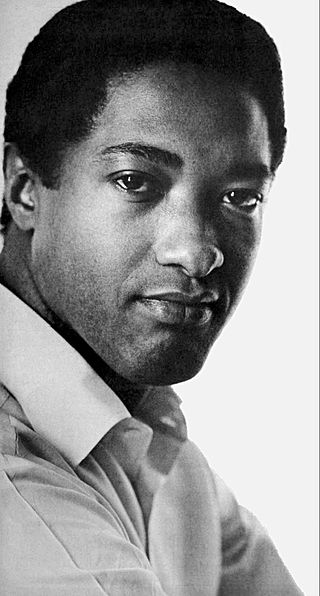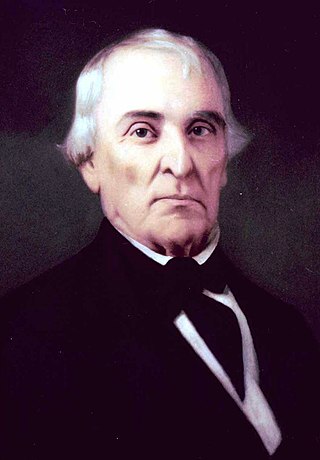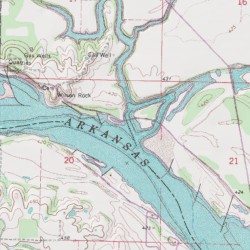Plot summary
Walk in My Soul is the story of Tiana Rogers of the Cherokee, the young Sam Houston, and the Trail of Tears.
Tiana grew up learning the magic, spells, and nature religion of the Cherokee. In a tribe that revered the life force that was female, she became a beloved woman—priestess, healer, and teacher.
Known as the "father of Texas", the young Sam Houston ran away on a lark from his family's general store in Maryville, Tennessee, to live among the Cherokee. He hunted and played ritual games with the men and was adopted as a headman's son and was known as "Raven".
Houston falls in love with Tiana, but due to their differing racial and cultural backgrounds, conflict ensues.

Samuel Houston was an American general and statesman who played an important role in the Texas Revolution. He served as the first and third president of the Republic of Texas and was one of the first two individuals to represent Texas in the United States Senate. He also served as the sixth governor of Tennessee and the seventh governor of Texas, the only individual to be elected governor of two different states in the United States.

Cherokee County is a county located in the U.S. state of Texas. As of the 2020 census, its population was 50,412. The county seat is Rusk, which lies 130 miles southeast of Dallas and 160 miles north of Houston. The county was named for the Cherokee, who lived in the area before being expelled in 1839. Cherokee County comprises the Jacksonville micropolitan statistical area, which is also included in the Tyler–Jacksonville combined statistical area.

Samuel Cook, known professionally as Sam Cooke, was an American singer and songwriter. Considered to be a pioneer and one of the most influential soul artists of all time, Cooke is commonly referred to as the "King of Soul" for his distinctive vocals, notable contributions to the genre and significance in popular music.

William Hall was an American politician who served as the seventh Governor of the state of Tennessee from April to October 1829.
The Killough massacre is believed to have been both the largest and last Native American attack on white settlers in East Texas. The massacre took place on October 5, 1838, near Larissa, Texas, in the northwestern part of Cherokee County. There were eighteen victims, including Isaac Killough, Sr., and his extended family. They had immigrated to the Republic of Texas from Talladega County, Alabama, in 1837.

True Women is a 1997 American Western CBS TV miniseries based on the 1993 novel by Janice Woods Windle directed by Karen Arthur, starring Dana Delany, Annabeth Gish, Angelina Jolie, Julie Carmen, Tina Majorino and Rachael Leigh Cook. It was filmed in Austin, San Antonio, and McDade, Texas. The series covers five decades, from the Texas Revolution through Native American uprisings and the Civil War to the early stages of the women's suffrage movement. This miniseries was first aired on the CBS television network over two nights during May 1997.
Lucia St. Clair Robson is an American historical novelist. She was married to science fiction novelist Brian Daley. She is a 1982 recipient of the Spur Award for Best Novel of the West.
The Battle of the Neches, the main engagement of the Cherokee War of 1838–1839, took place on 15–16 July in 1839 in what is now the Redland community. It resulted from the Córdova Rebellion and Texas President Mirabeau Bonaparte Lamar's determination to remove the Cherokee people from Texas. Many Cherokee had migrated there from the American Southeast to avoid being forced to Indian Territory.

John Jolly, was a leader of the Cherokee in Tennessee, the Arkansas Territory, and the Indian Territory, now Oklahoma. After 1818, he was the Principal Chief and after reorganization of the tribal government, he was made president of the Cherokee Nation–West.
The Bowl ; John Watts Bowles was one of the leaders of the Chickamauga Cherokee during the Cherokee–American wars, served as a Principal Chief of the Cherokee Nation–West, and was a leader of the Texas Cherokees.
Texas Cherokees were the small settlements of Cherokee people who lived temporarily in what is now Texas, after being forcibly relocated from their homelands, primarily during the time that Spain, and then Mexico, controlled the territory. After the Cherokee War of 1839, the Cherokee communities in Texas were once again forcibly removed to Indian Territory in present-day Oklahoma. When Union troops took control of Cherokee territory in 1863, many "Southern" Cherokees fled to Texas, but after the war, most of them returned to their homes in Indian Territory. Others are part of the multitribal Mount Tabor Indian Community, or Tsalagiyi Nvdagi Tribe which are both recognized by the State of Texas

Angelo Earl is an American guitarist, record producer, songwriter and owner of Soul Street Records. Earl is most widely known for playing electric guitar on Al Green's "He Is The Light", Bobby Rush's "Southern Soul", the Bar-kays' "The Real Thing", contributing vocal work to Isaac Hayes' "Branded", touring with the Jackson family, touring with the Funk Brothers and writing for Queen's "Under Pressure". Recently, Earl appeared on episodes of The Jacksons: A Family Dynasty on A&E. Earl's musical career has spanned over 20 years.

The Soul Divas Tour was a co-headlining concert tour by American recording artists Dionne Warwick, Natalie Cole and Whitney Houston. The tour was a one-month trek that started on July 7, in Hamburg, Germany. The tour was created and initiated by Felix Scheuerpflug and the team of the Welldone Agency. The exclusive promoter was Tchibo. Tickets were available on Tchibo.de only. Houston, who was featured as the main headliner, also toured Thailand, Hong Kong, and China without Cole and Warwick, adding a few more dates through late July.

Samuel "Sam" Houston represented the state of Tennessee in the United States House of Representatives, and was elected Governor of Tennessee. He resigned the governorship in 1829 and lived with the Cherokee in the Arkansas Territory. The Cherokee named him "Golanv" meaning "The Raven". In 1832 he moved to Coahuila y Tejas and was a signer of the Texas Declaration of Independence on March 2, 1836. Houston was appointed commander-in-chief of the Provisional Army of Texas, and accepted the surrender of Mexican general Antonio López de Santa Anna following the Battle of San Jacinto.

Big Skin Bayou, also known as Skin Bayou or Big Skin Creek, is a tributary of the Arkansas River located in Sequoyah County, Oklahoma. It takes its name from the word "skein" which are loose, tangled layers of yarn. A large, colorful canebrake resembling yarn; formed a near impenetrable, natural wall near the mouth of the creek before it was cleared for farming. French trappers and explorers named several of the major tributaries of the Arkansas River in Oklahoma; as it was once a part of the French Territory of Louisiana that was later the Louisiana Purchase. At one time, there were large rock bluffs near Big Skin's confluence with the Arkansas. The bluff on the south side of the river and across from Big Skin's confluence was known as Swallow Rock, named for the birds that nested there and was the site of the old Fort Coffee. The bluff on the north side of the river and west of Big Skin is known as Wilson Rock. Both bluffs formed a natural wharf and served as historic steamboat landings and ferry crossings. The cemetery at Wilson Rock contains the graves of local residents as well as some travelers that fell victim to the river over the years. Tiana, the wife of the famed Texan Sam Houston was buried at Wilson Rock Cemetery for several years until she was moved to a cemetery near Fort Gibson. Wilson Rock and Big Skin Bayou were also drop off points for several groups of Cherokees that were forced to relocate to that part of Oklahoma/Indian Territory on the Trail of Tears. The relocated tribesmen that disembarked here would then follow the creek into the interior parts of Skin Bayou District where they settled. Most of eastern Sequoyah County was included in the "Skin Bayou District" of Cherokee Nation, Indian Territory; which also took its name from the creek.
Gone to Texas is a 1986 American made-for-television biographical film originally titled Houston: The Legend of Texas. It stars Sam Elliott in the title role, and is a biopic of Sam Houston's years as Governor of Tennessee through his involvement in the Texas Revolution.

Sam Houston was a slaveholder who had a complicated history with the institution of slavery. He was the president of the independent Republic of Texas, which was founded as a slave-holding nation, and governor of Texas after its 1845 annexation to the union as a slave-holding state. He voted various times against the extension of slavery into the Western United States and he did not swear an oath to the Confederate States of America, which marked the end of his political career.
Eliza Allen also known as Eliza Allen Houston Douglass was the first wife of Sam Houston. Their marriage, over after just eleven weeks, ended Houston's career as governor of Tennessee. Houston resigned and went to the home of his foster father John Jolly, a leader of the Cherokee people. Allen returned to her family in Sumner County. For years, their marriage was the subject of rumors and theories about what made the marriage unsuitable to both Allen and Houston. They did not publicly expose any information about their marriage and they both seemed to be protective of one another's reputation. Allen's brother, Judge Benjamin Franklin Allen offered his opinion: "like many other couples they were not congenial".

Sam Houston had a diverse relationship with Native Americans, particularly the Cherokee from Tennessee. He was an adopted son, and he was a negotiator, strategist, and creator of fair public policy for Native Americans as a legislator, governor and president of the Republic of Texas. He left his widowed mother's home around 1808 and was taken in by John Jolly, a leader of the Cherokee. Houston lived in Jolly's village for three years. He adopted Cherokee customs and traditions, which stressed the importance of being honest and fair, and he learned to speak the Cherokee language. He felt that Cherokees and other indigenous people had been short-changed during negotiation of treaties with United States government, the realization influenced his decisions as a military officer, treaty negotiator, and in his roles as governor of the states of Tennessee and Texas, and president of the Republic of Texas.
Hiwassee Island, also known as Jollys Island and Benham Island, is located in Meigs County, Tennessee, at the confluence of the Tennessee and Hiwassee Rivers. It is about 35 mi (56 km) northeast of Chattanooga. The island was the second largest land mass on the Tennessee River at 781 acres before the Tennessee Valley Authority created the Chickamauga Lake as a part of the dam system on the Tennessee River in 1940. Much of the island is now submerged, leaving 400 acres above the waterline.












